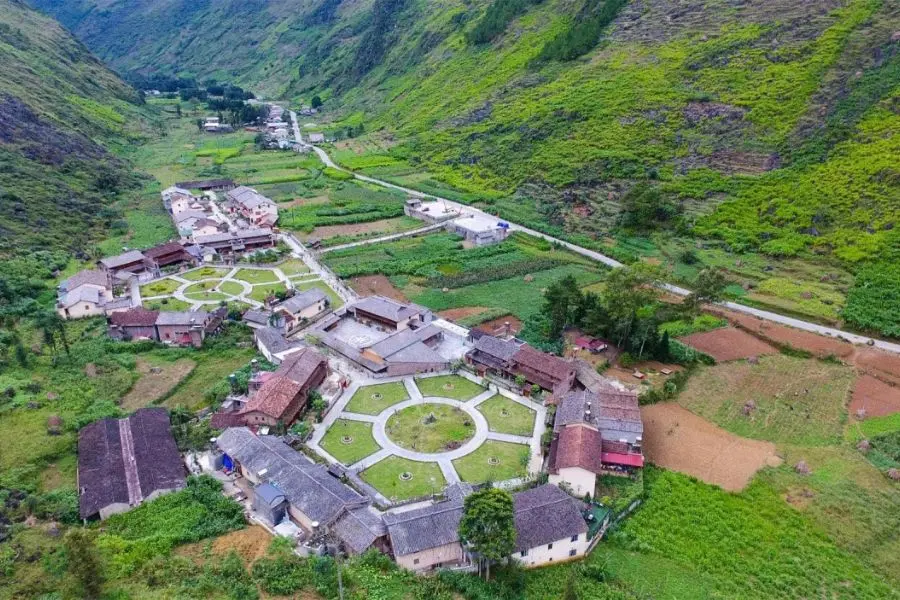Tucked away in a serene valley surrounded by the limestone peaks of northern Vietnam, Pa Vi Village in Meo Vac District, Tuyen Quang Province, is a living postcard of H’mong culture. It’s not just another stop on your Vietnam vacation - it’s a place where you can slow down, breathe mountain air, and experience how cultural heritage and sustainable tourism blend in perfect harmony.
Where Culture Meets the Clouds
Pa Vi Village sits about 160 km from Ha Giang City, near the legendary Ma Pi Leng Pass and Nho Que River. While the drive may take a few hours, every turn reveals dramatic mountain views, misty valleys, and tiny villages perched on cliffside terraces. When you finally reach Pa Vi, it feels like stepping into another world - quiet, authentic, and cinematic.
In 2025, the village was proudly named Vietnam’s Best Community Tourism Destination by the National Tourism Administration. And once you see it, you’ll understand why.
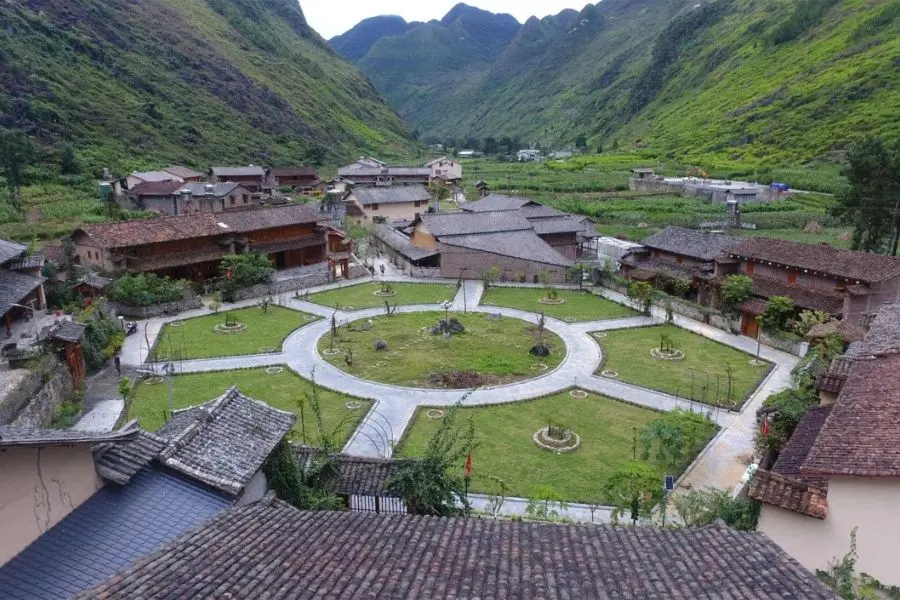
A Village Like No Other
Spread over 46,000 square meters, Pa Vi Village is home to nearly 30 H’mong households who open their doors to visitors through community-based tourism. The village is divided into three main areas (A, B, and C), each connected by stone pathways and lined with beautifully preserved H’mong houses.
Every house follows the traditional H’mong design: wooden frames, yin-yang tiled roofs, thick earthen walls, and sturdy stone fences. It’s a balance between old-world charm and modern comfort - where you can sip green tea by a wood-burning stove, then fall asleep under crisp white sheets in a cozy homestay.
At the heart of the village lies a hexagonal courtyard - the communal stage for traditional music, dance, and festivals. On weekends, locals perform folk songs and bamboo flute dances, inviting travelers to join in the laughter and rhythm.
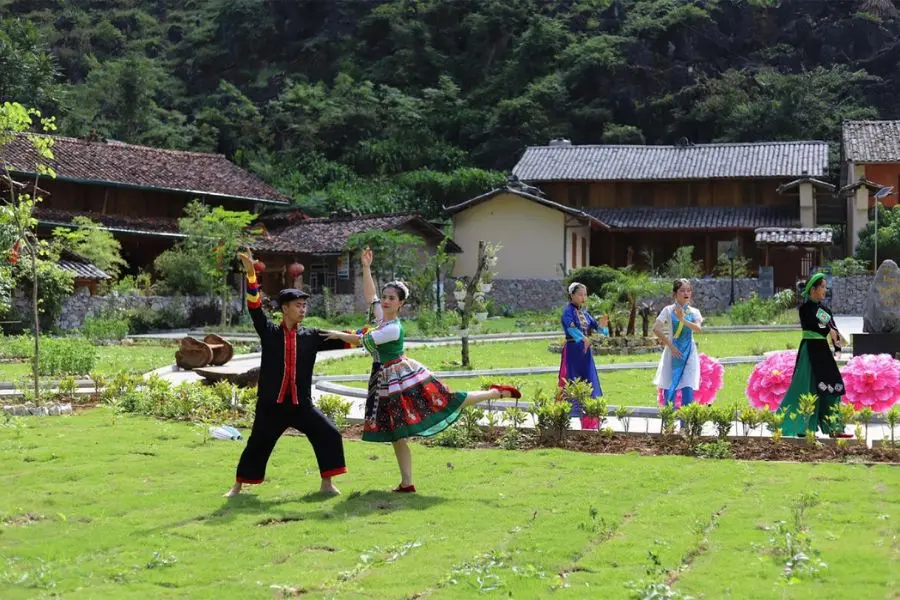
A Scene Straight Out of a Movie
Many visitors describe Pa Vi village as “like walking into a film set.” And they’re not exaggerating. Between the stone fences, flower gardens, and wooden homes dusted with mountain mist, it feels cinematic. Every corner is a perfect backdrop for photos - especially at sunrise, when sunlight spills into the valley and the sound of distant bells echoes across the hills.
The village’s architecture and daily life are so authentic that even Vietnamese visitors from big cities say they feel like they’ve discovered “a lost world” - a rare glimpse into how the H’mong people have lived for generations.
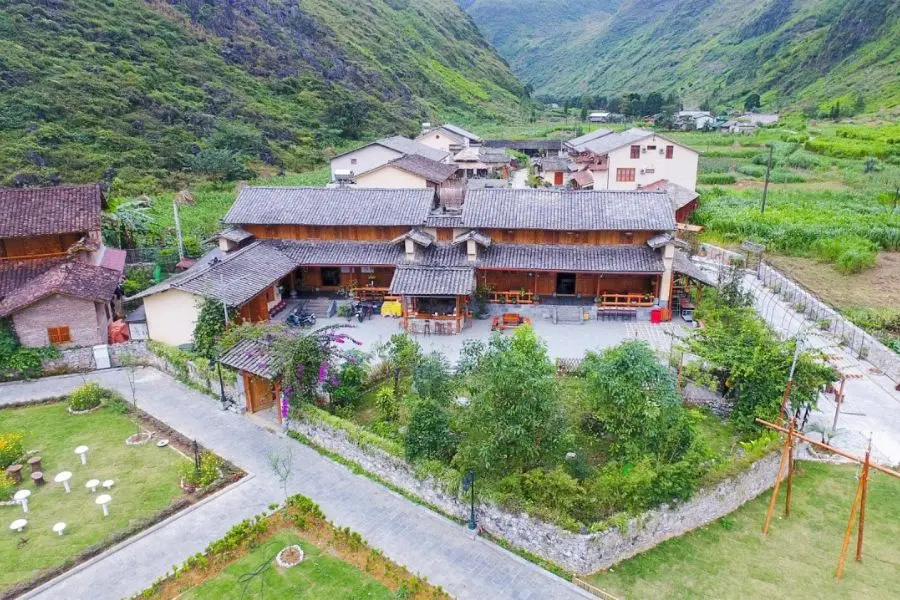
Cultural Immersion: Festivals, Crafts, and Daily Life
If you time your visit right, you can witness the Gau Tao Festival, held from the 5th to the 15th of the first lunar month. This is one of the most important celebrations for the H’mong - a time to pray for blessings, good health, and abundant harvests. The atmosphere is electric: colorful traditional costumes, hand-embroidered skirts twirling in the wind, bamboo flutes echoing across the hills.
Throughout the year, visitors can join various cultural activities - learning how to make H’mong handicrafts, watching traditional weaving, or trying their hand at local cuisine. It’s not a staged “tourist show”; it’s genuine interaction with people who live and breathe their heritage every day.
Where to Stay: Authentic Comfort
Pa Vi village offers over 20 homestays, each run by local families but designed with modern travelers in mind. You’ll find a mix of shared dorms and private rooms, all built within traditional H’mong-style houses. Interiors often feature wooden furniture, handwoven textiles, and large windows that open to breathtaking mountain views.
Popular options include Meo Vac Clay House, Mong Lodge, A Sen Homestay, PanTau Home, and Meo Vac Valley. Prices range from VND 500,000 (~$20) to over VND 1,000,000 (~$40) per night - affordable, cozy, and full of charm.
In the evenings, gather around the communal fire to taste homemade corn wine, share stories with locals, and stargaze in the quiet of the highlands.
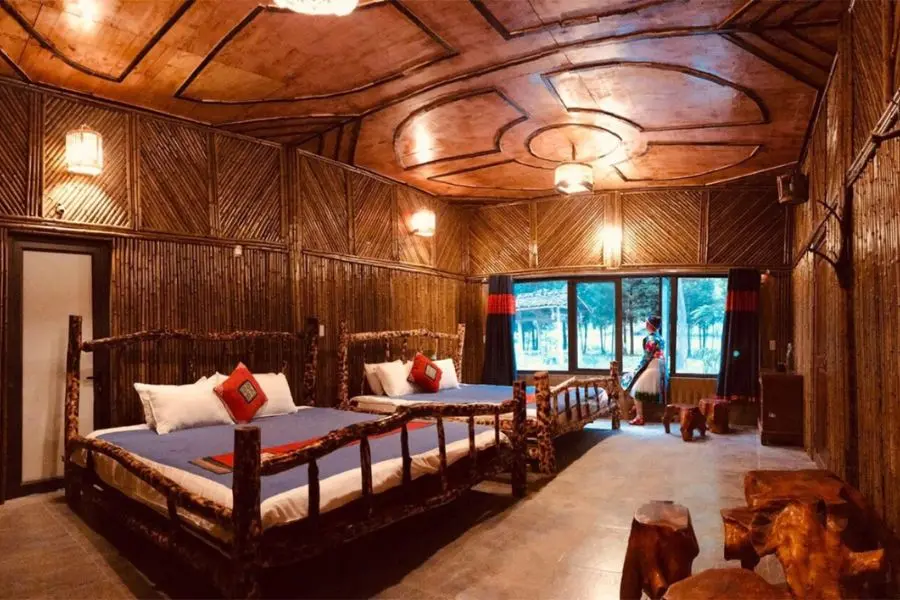
Things to Do Around Pa Vi Village
- Visit Ma Pi Leng Pass: Just a short drive away, this is one of Vietnam’s most breathtaking mountain passes. The panoramic view of Nho Que River winding below is a must-see.
- Take a boat trip on Nho Que River: Glide between towering cliffs and emerald waters - a surreal experience, especially during early morning mist.
- Explore Meo Vac Market: Every Sunday, locals from surrounding villages gather to trade produce, livestock, and handwoven goods. It’s the best place to witness authentic highland life.
- Hike the surrounding trails: You’ll pass terraced fields, limestone formations, and maybe even encounter herds of goats grazing under the morning sun.
How to Get to Pa Vi Village
From Hanoi, the most common route is to take a bus or private car to Ha Giang City (about 6–7 hours), then continue to Meo Vac and Pa Vi Village (about 4 hours more). Roads are winding but scenic - ideal for travelers who love road trips and mountain adventures.
For a more comfortable journey, book a private car with a local driver familiar with the region, as phone signals and English signs can be limited.
Tips for Travelers
- The best time to visit is September to April, when the weather is cool and clear.
- Pack warm clothes - nights can get chilly even in summer.
- Respect local customs: ask before taking photos, avoid entering private homes without permission, and dress modestly.
- Support local artisans by purchasing handmade textiles or honey directly from families.
Why Pa Vi Deserves a Spot on Your Vietnam Vacation
In a world where many destinations feel overdeveloped, Pa Vi village still holds its quiet authenticity. It’s not about fancy resorts or digital nomad cafés - it’s about real connections, cultural pride, and slow travel.
Here, tourism supports preservation. Every meal you enjoy, every homestay you choose helps sustain local livelihoods and keep H’mong traditions alive. So if you’re planning your next Vietnam vacation, skip the predictable and head north - where mountains meet clouds, and life moves to the rhythm of bamboo flutes.

